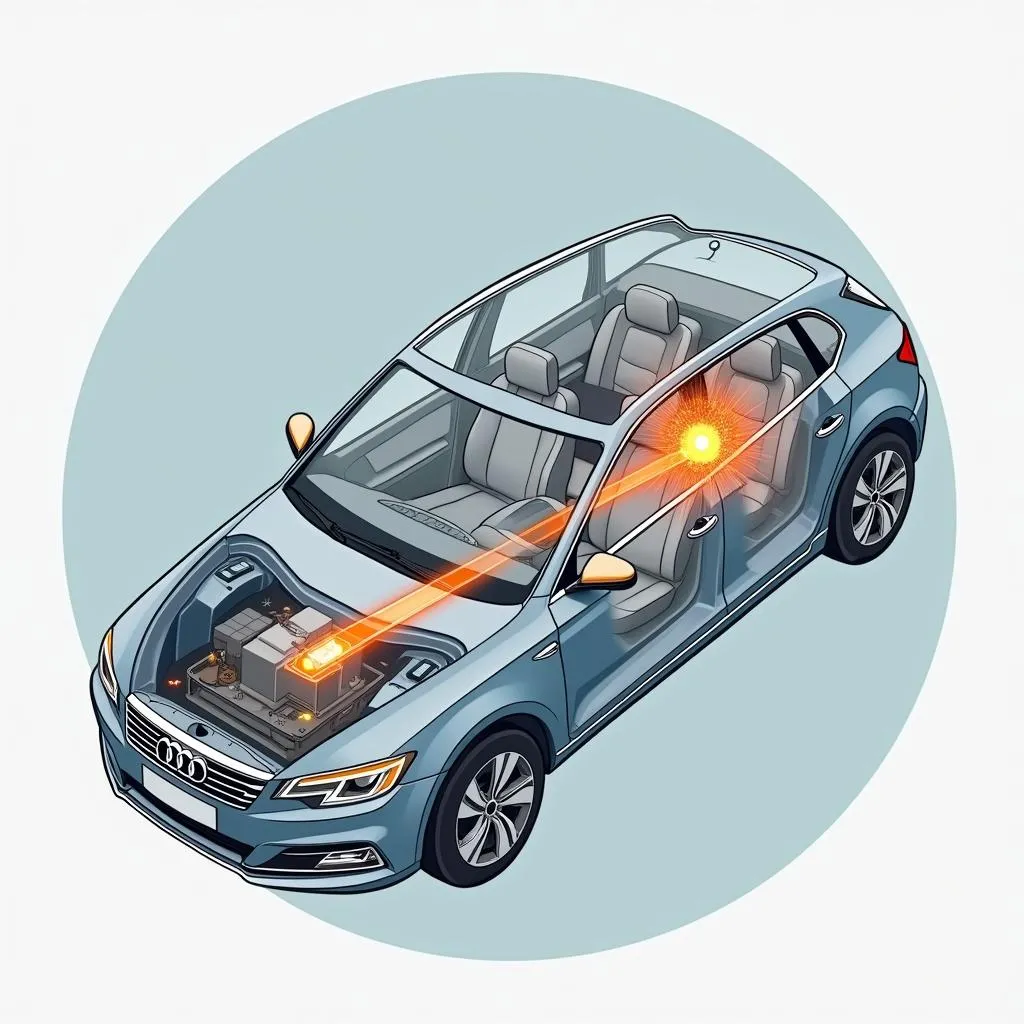The brake warning light on your dashboard is a crucial safety feature, designed to alert you of potential issues within your braking system. When illuminated, it signifies that one or more components might be malfunctioning, requiring immediate attention. While numerous factors can trigger this warning light, this article focuses specifically on the switches that can cause it to illuminate. Understanding their function and potential problems can be invaluable in diagnosing and addressing brake system issues.
Common Switches that Trigger the Brake Warning Light
Two primary switches are commonly associated with the brake warning light:
-
Brake Fluid Level Switch: This switch monitors the brake fluid level in the master cylinder. A drop below a safe level, often due to a leak within the system, activates this switch, illuminating the warning light and indicating a potential loss of brake pressure.
-
Brake Light Switch: Positioned behind the brake pedal, this switch activates the brake lights when the pedal is depressed. However, a malfunctioning brake light switch can also trigger the brake warning light. This could be due to a faulty electrical connection, internal switch failure, or misalignment caused by wear and tear.
Why Identifying the Culprit Switch is Important
Distinguishing which switch is triggering the warning light is crucial for accurate diagnosis and repair. For instance, if the brake fluid level switch is faulty but the fluid level is adequate, simply replacing the fluid won’t resolve the issue. Similarly, replacing the master cylinder when a faulty brake light switch is the culprit proves unnecessary and costly.
How to Determine Which Switch is at Fault
Diagnosing these switches often requires a multimeter to test for continuity and voltage. However, visual inspection of the brake fluid level and testing the functionality of the brake lights can provide initial clues.
-
Check Brake Fluid Level: If the fluid level is below the minimum mark, it strongly suggests an issue with either the brake fluid level switch or a leak in the brake system.
-
Test Brake Lights: If the brake lights are not functioning correctly (dim, flickering, or completely out), it points towards a potential problem with the brake light switch.
Importance of Professional Diagnosis
“While these initial checks can be helpful,” says automotive electrical engineer, Sarah Chen, “it’s crucial to remember that a professional diagnosis is always recommended for any brake system issues. They have the experience, tools, and knowledge to pinpoint the exact cause and ensure a safe and effective repair.”
Beyond the Switches: Other Potential Causes
While the brake fluid level switch and brake light switch are common culprits, it’s important to remember that other components can trigger the brake warning light. These include:
-
Worn Brake Pads: Most modern vehicles have wear sensors in the brake pads that activate the warning light when the pads reach a certain thickness.
-
ABS Issues: Problems with the Anti-lock Braking System (ABS), such as a faulty wheel speed sensor, can also illuminate the brake warning light.
-
Master Cylinder Failure: A malfunctioning master cylinder can disrupt hydraulic pressure, leading to a loss of braking power and triggering the warning light.
Addressing the Brake Warning Light: Safety First
“Never ignore a glowing brake warning light,” warns John Miller, a seasoned automotive technician. ” It’s a clear signal from your vehicle that your safety might be at risk. Addressing the issue promptly and effectively can prevent a minor inconvenience from escalating into a dangerous situation.”
Conclusion
The brake warning light is a critical safety feature in your vehicle, and understanding what switches can turn it on is vital for maintaining optimal braking performance. By familiarizing yourself with these switches, their functions, and potential issues, you’re better equipped to address any brake system concerns effectively. Remember, while this information serves as a helpful guide, always seek professional assistance for diagnosis and repair to ensure your safety and the longevity of your vehicle’s braking system.


